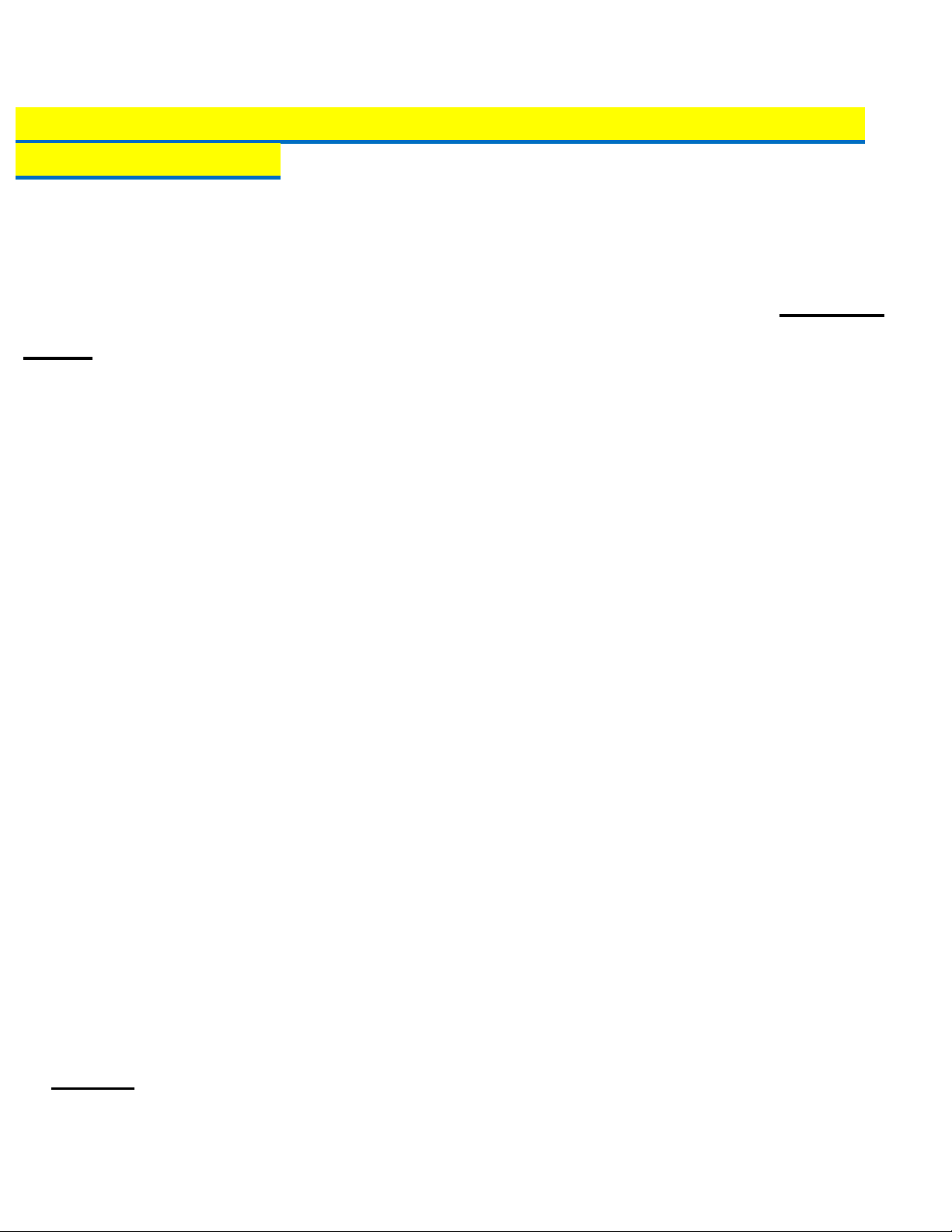
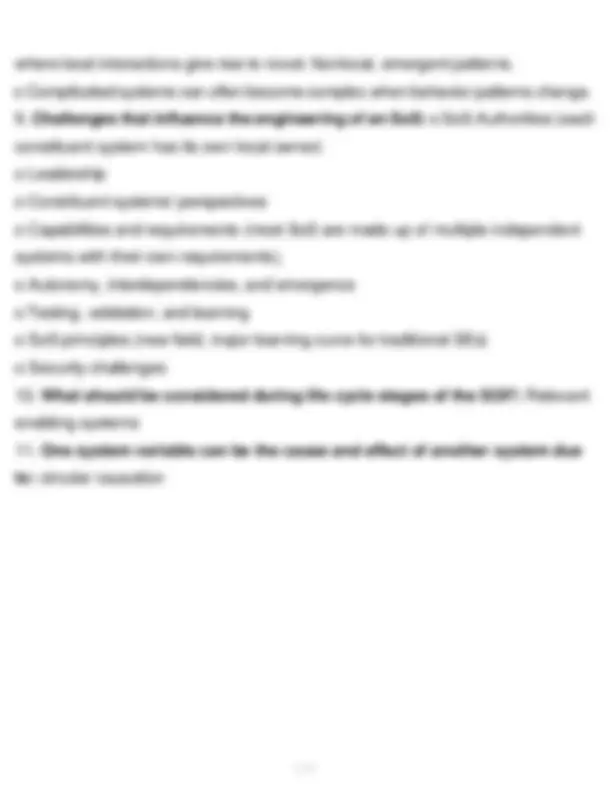
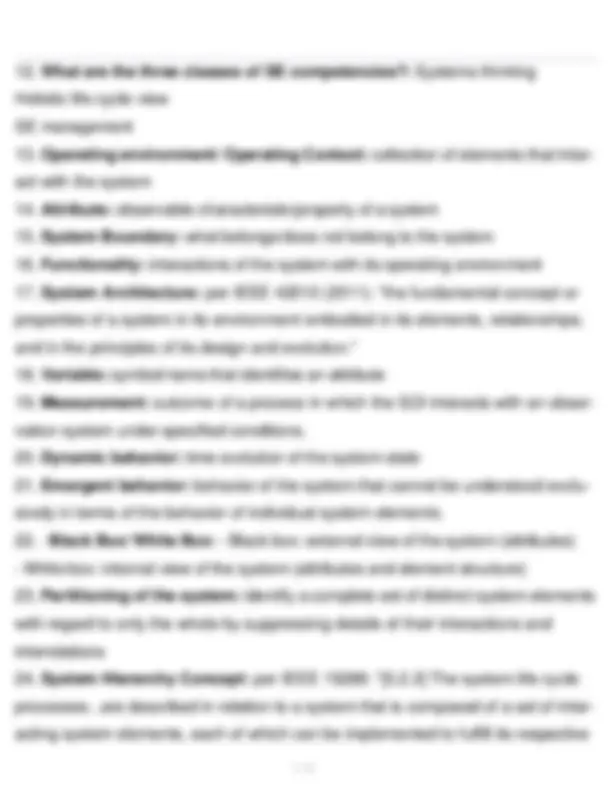
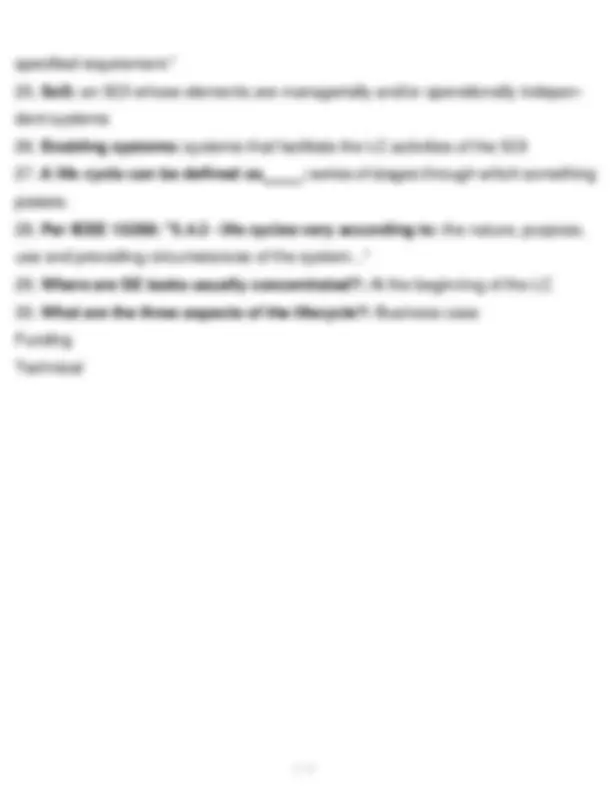
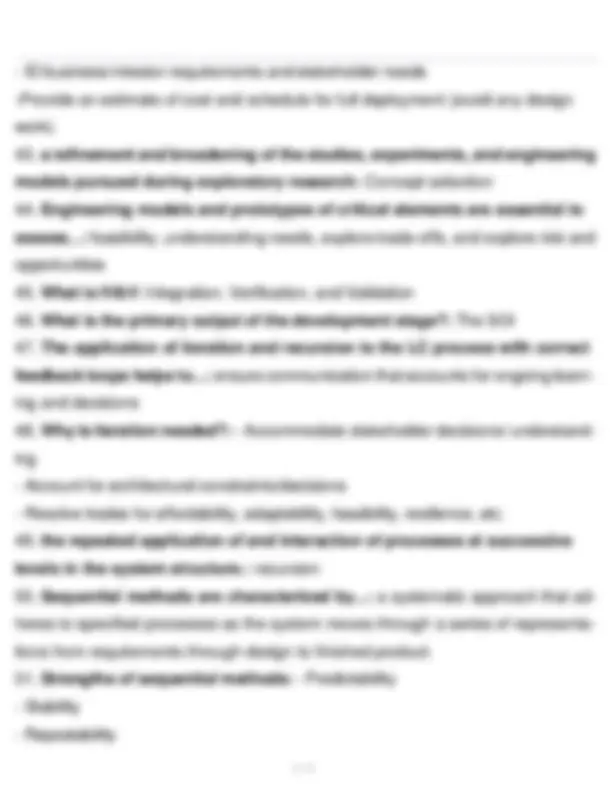
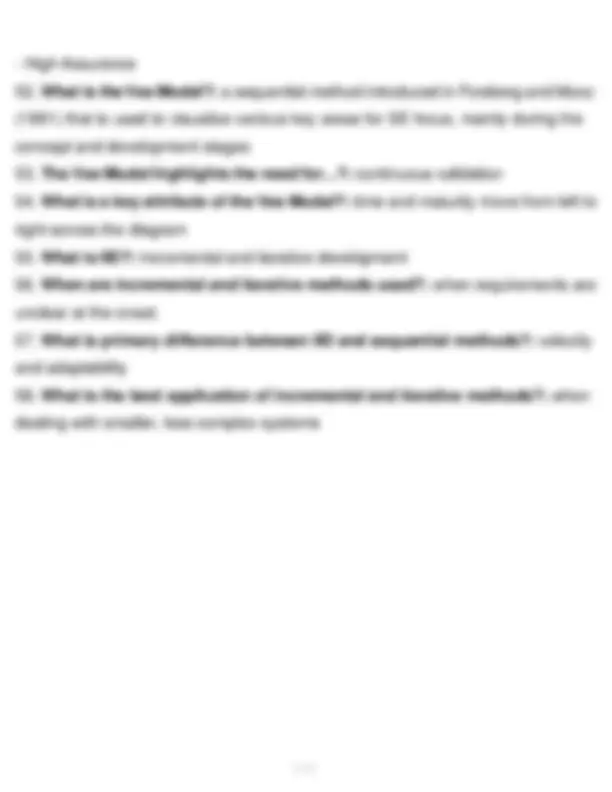
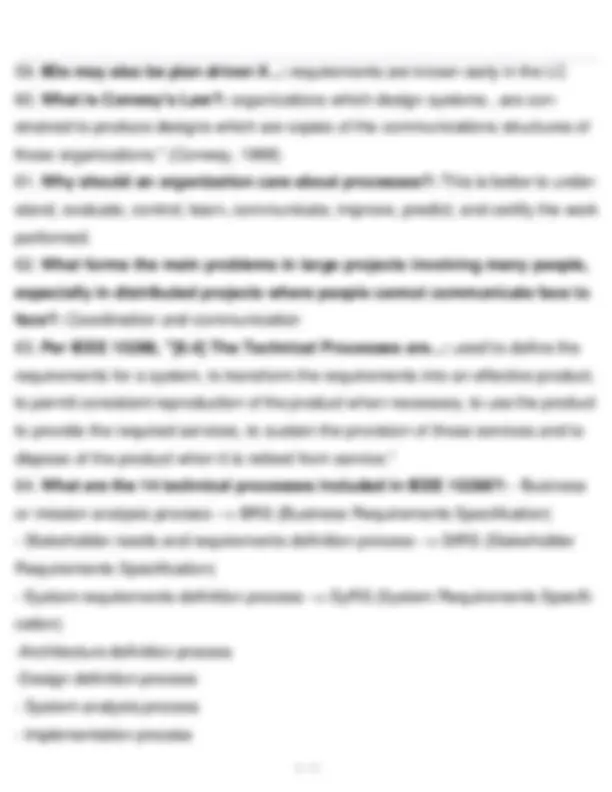
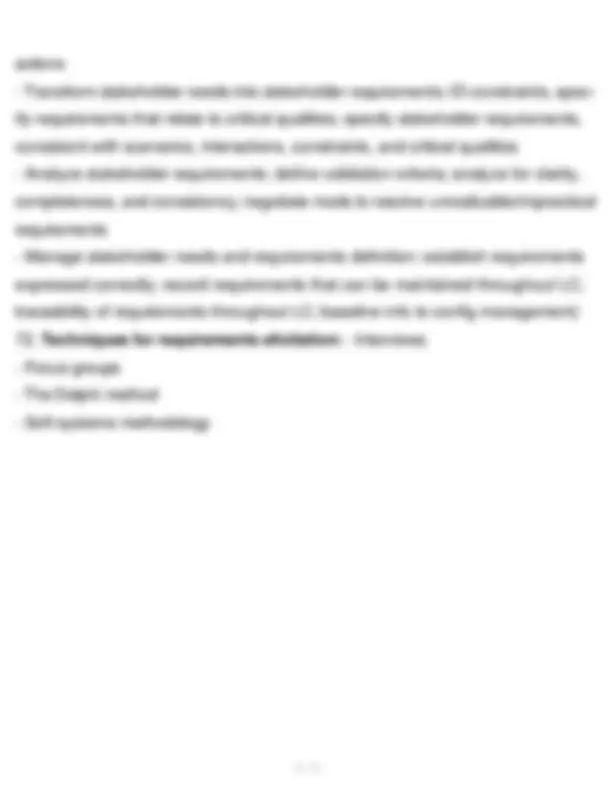
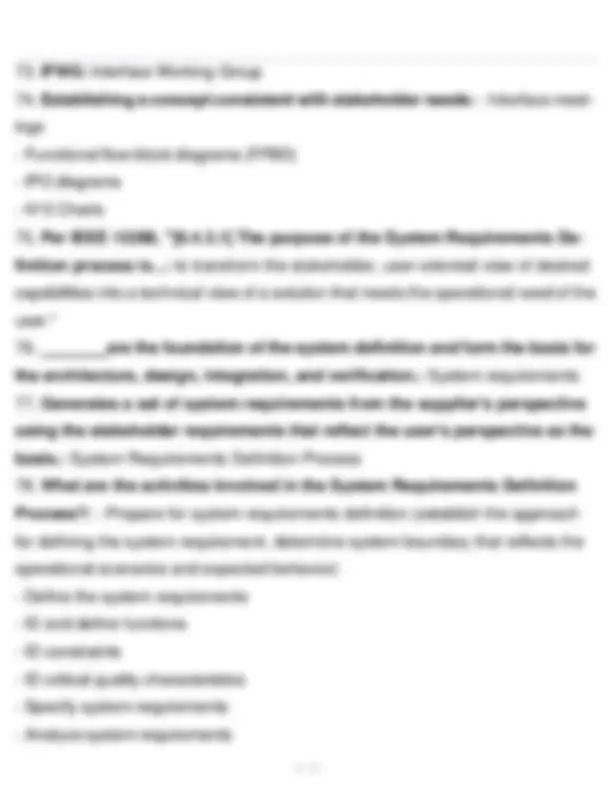
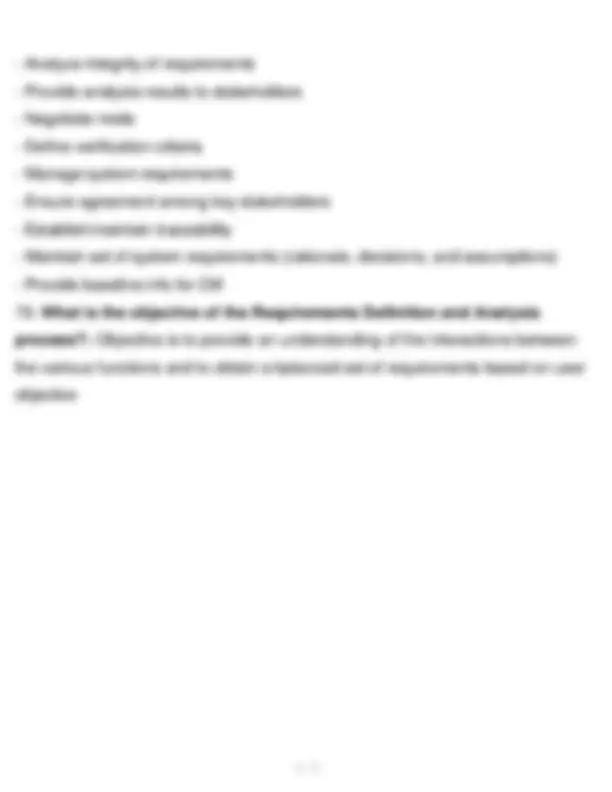
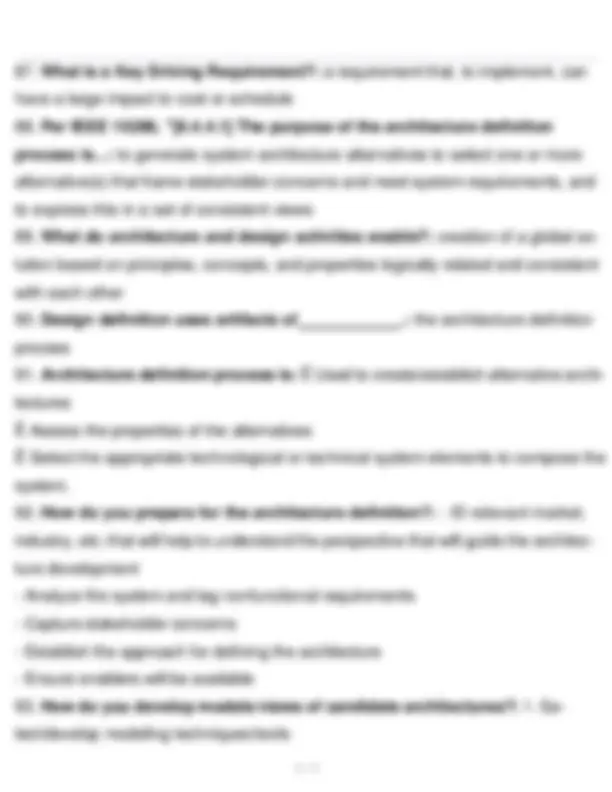
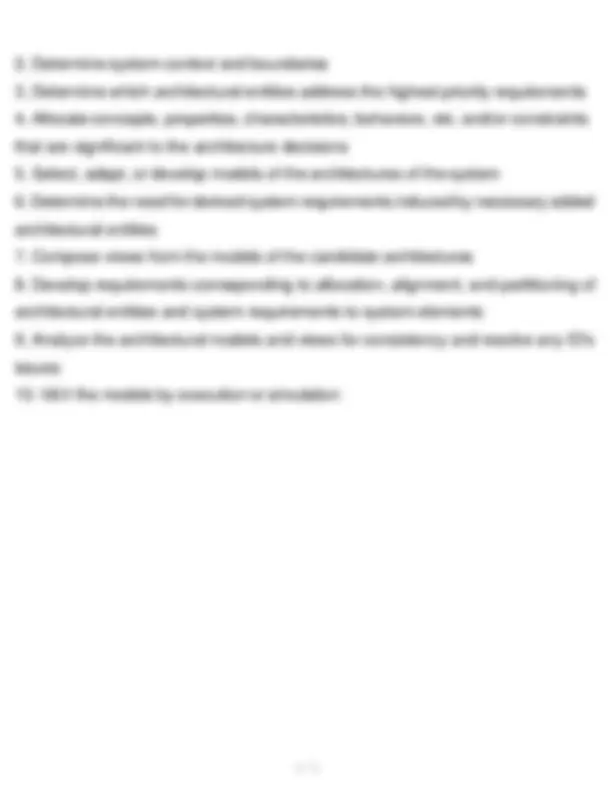
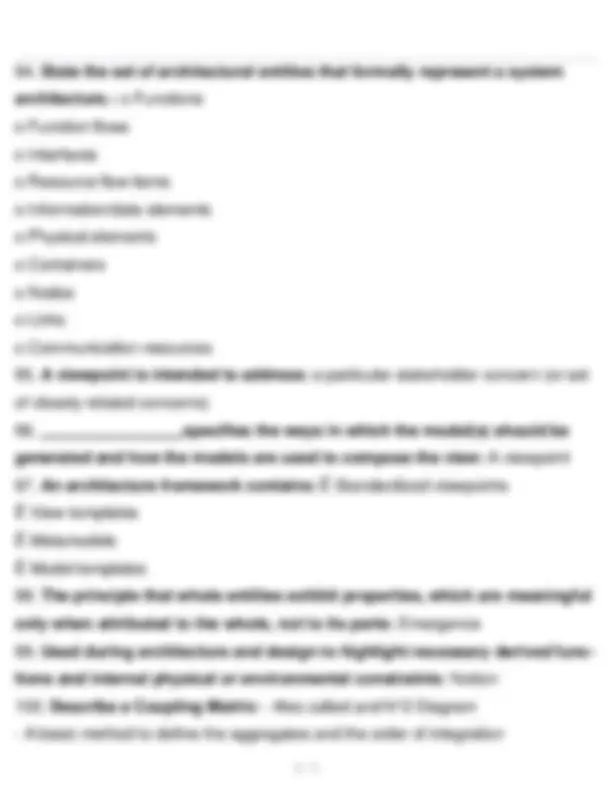
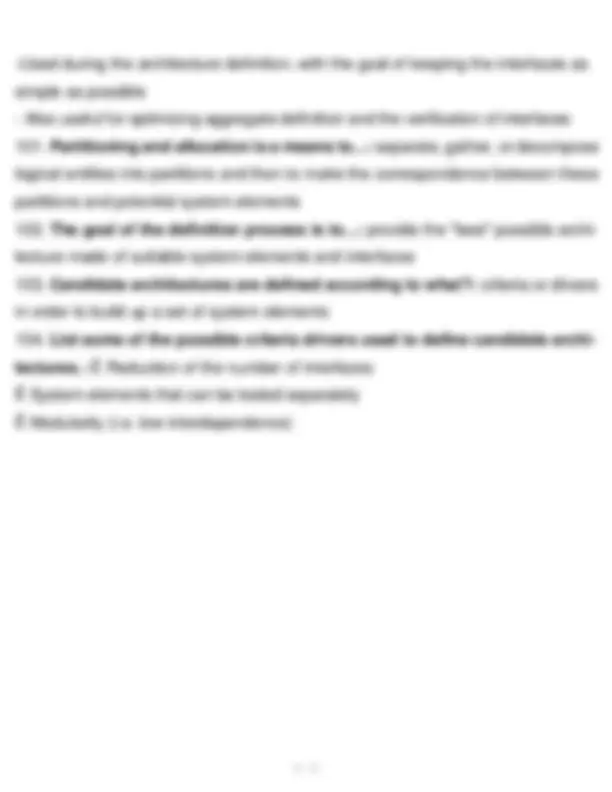
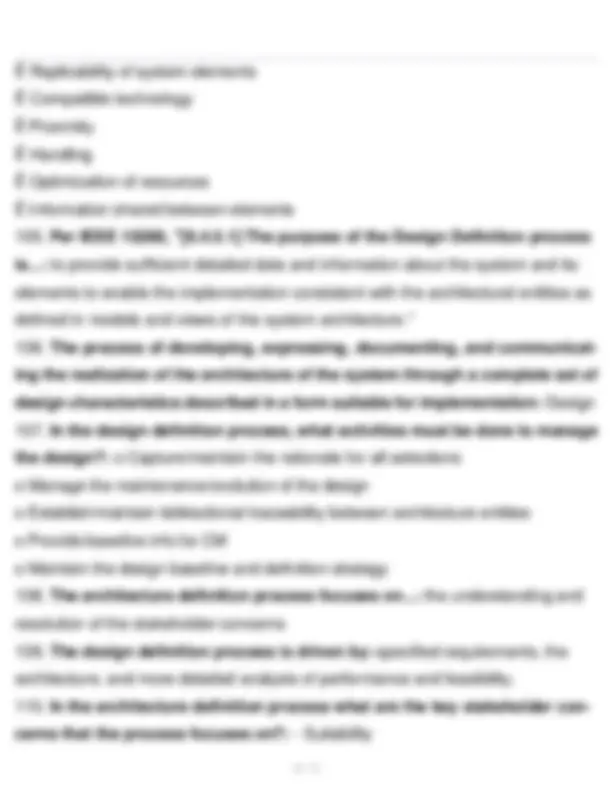
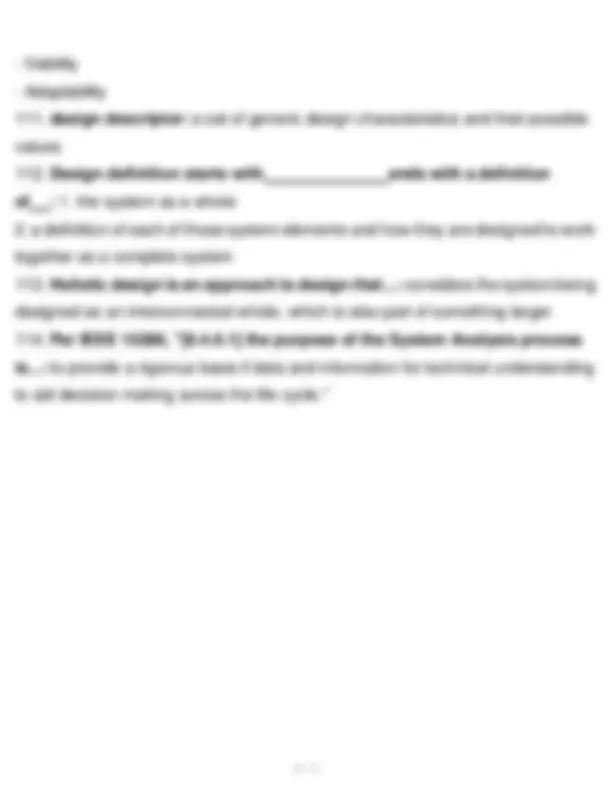
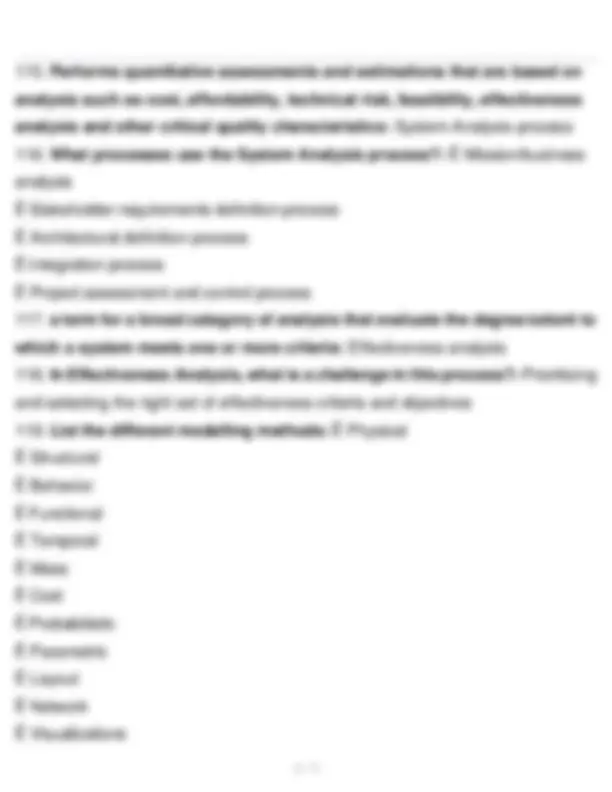
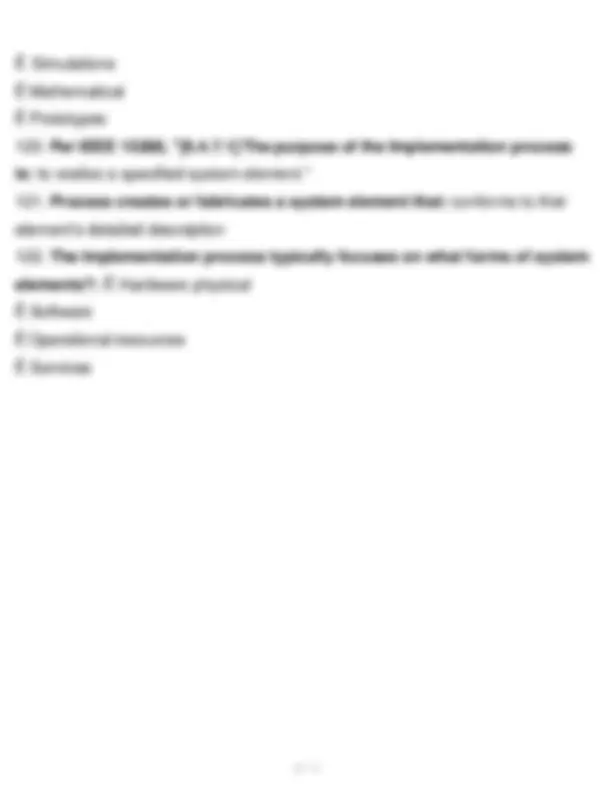
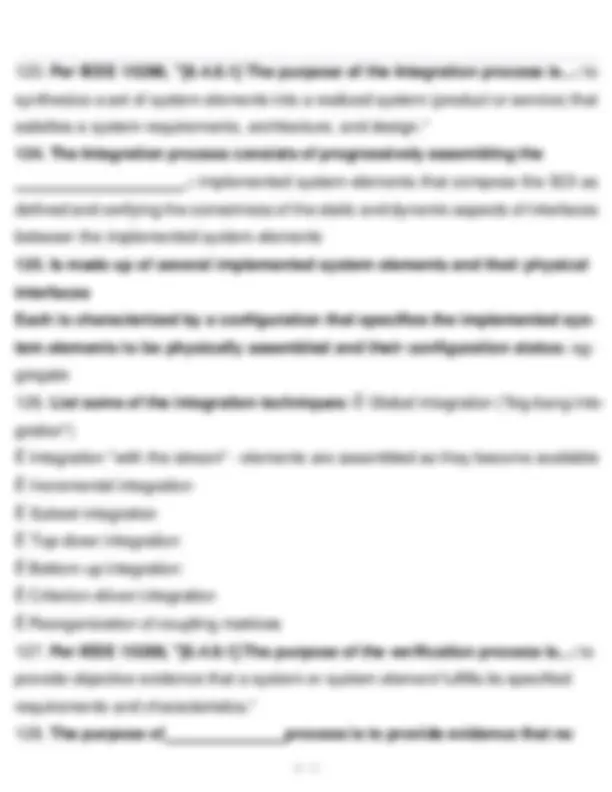
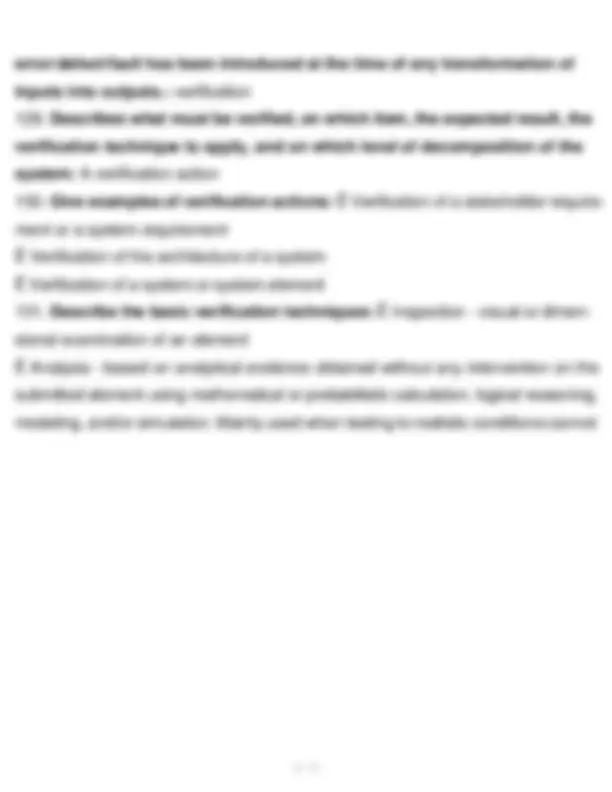
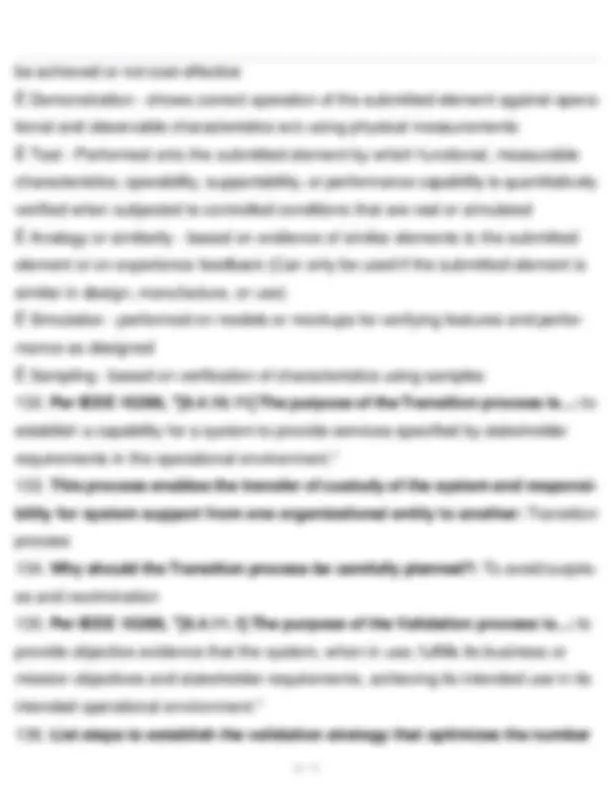
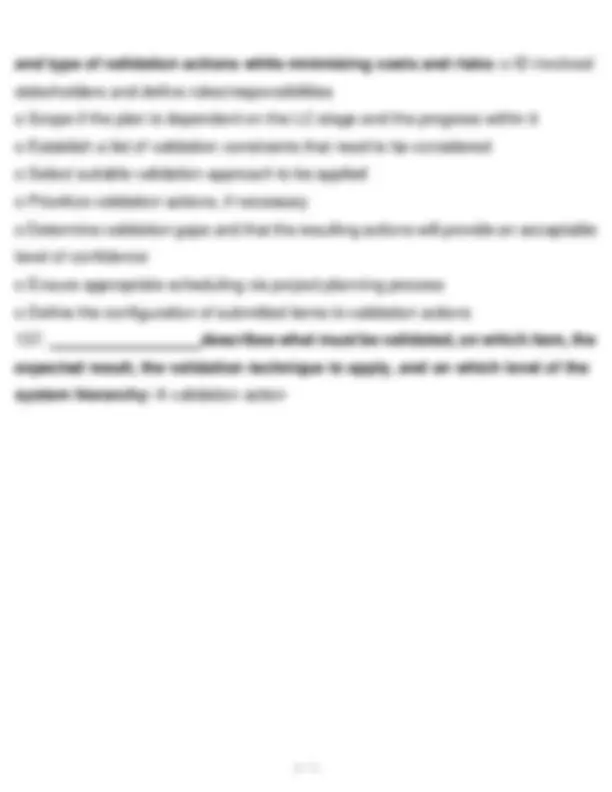
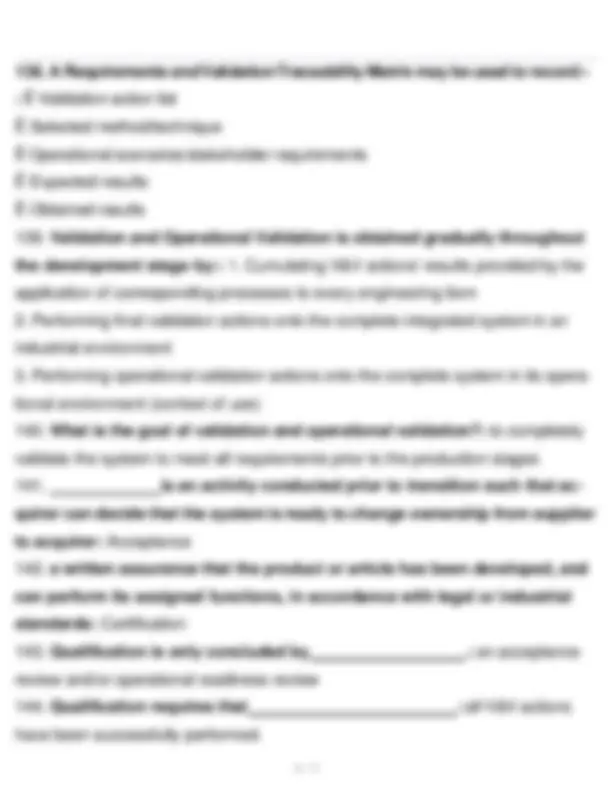
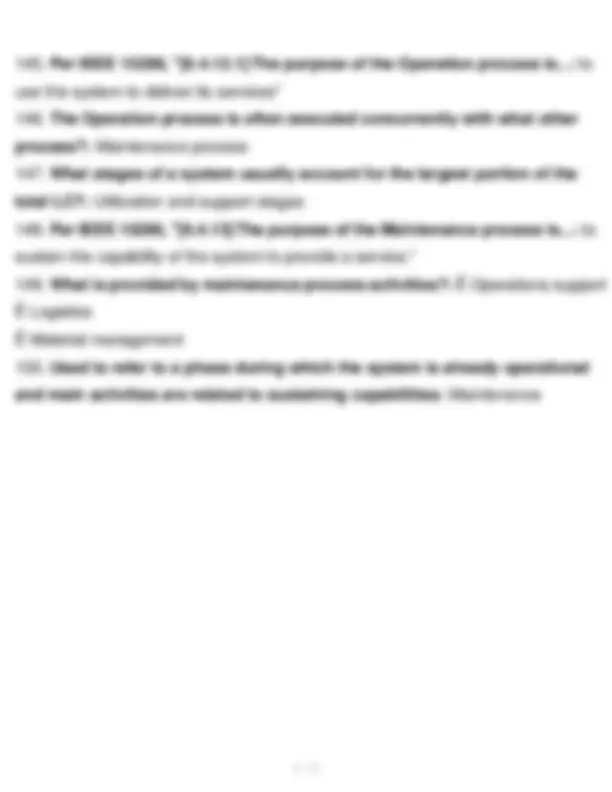
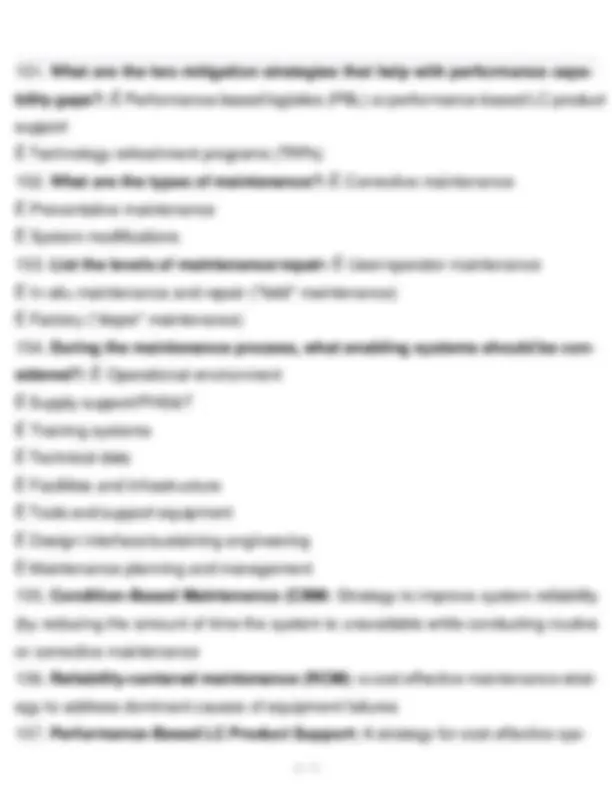
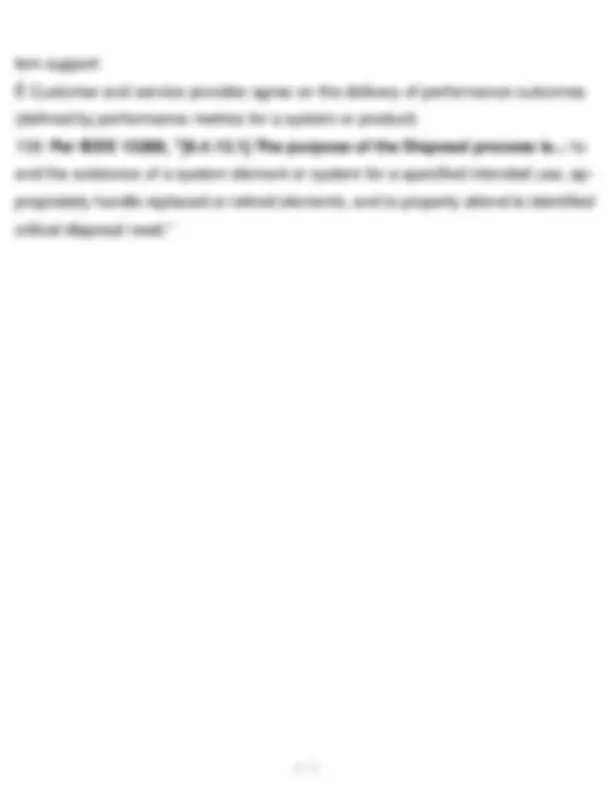


Study with the several resources on Docsity

Earn points by helping other students or get them with a premium plan


Prepare for your exams
Study with the several resources on Docsity

Earn points to download
Earn points by helping other students or get them with a premium plan
Community
Ask the community for help and clear up your study doubts
Discover the best universities in your country according to Docsity users
Free resources
Download our free guides on studying techniques, anxiety management strategies, and thesis advice from Docsity tutors
ASEP-CSEP Prep Questions and Answers INCOSE) - I (SE Handbook Ch.1-4)
Typology: Exams
1 / 33

This page cannot be seen from the preview
Don't miss anything!


























o In complex systems, interactions between the parts exhibit self-organization
specified requirement."
actions
o Requirements validation status: indicates whether requirement was validated or not o Priority o Criticality o Risk o Key driving requirement (KDR) o Owner o Rationale o Applicability o Type